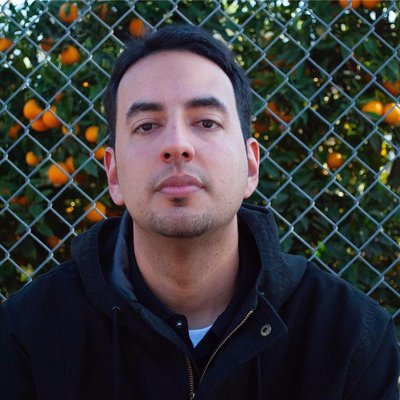
The music is great and the demographics are there for the taking, so is it only a matter of time before a Latin Alternative explosion occurs Stateside? Producer and songwriter Desmond Child weighed in with his opinion in a recent Al Borde piece. As someone who has worked with the likes of Aerosmith and helped orchestrate Ricky Martin's crossover success, he says:
Back in the late '90s with Ricky and the whole Latin explosion, we saw Latin artists transcend into a new market. Now we have a new generation of urban artist who are doing the same thing and are coming up with a new flavor of hip-hop and Latin dance hall music, such as Wisin y Yandel. So I think there could definitely be a Latin Alternative explosion as well.
]
Jan Seedman of Cadium Music Publishing wrote a response to Child's assessment that was much more enthusiastic in tone. Citing the growing popularity of artists such as Ximena Sariñana, Zoé, Carla Morrison and Hello Seahorse! without major commercial radio support as well as his experiences with the Southern California tour of Argentina's Austria in September, “could definitely” becomes a prediction where Latin Alternative “is going to explode” in the future:
As Christian Mejia, an Orange County, CA club promoter and head of Intoroq said recently, can you imagine what would happen to the Latin Alternative genre if Latin Alternative artists were played on commercial radio (a la Los Angeles Modern Rock station KROQ) next to Foo Fighters, Coldplay, Florence + The Machine, Rage Against The Machine and Tori Amos? Well, it would blow up! Why? Because there are thousands of young Latinos and Latinas in the United States who are bi-lingual and listen to cutting edge music both in Spanish and English.
Such an idea is not without precedent. Years back, I'd scan the radio dial along the U.S.-Mexico border to find stations in Juarez and El Paso, Texas that both had bicultural playlists where you could hear the Deftones and Manu Chao in the same block of music. The supporting role of radio is an interesting aspect to the question at large. In Southern California, no such formula is readily employed and as a result, numerous shows have taken to the internet to fill the void. Latino Babel, SolArt and Sala de Espera Radio all play a diverse range of Latin Alternative music and feature interviews with the genre's local and international musicians. On the FM dial, there remains the longstanding independent, non-commercial Saturday night Travel Tips for Aztlan show hosted by Mark Torres and Mariluz Gonzalez.
The question of commercial radio did come into play at last week's Latin Grammy Awards in Las Vegas. As Calle 13 accepted Album of the Year honors René “Residente” Pérez repeated the phrase 'no a la payola' in his acceptance speech before cameras quickly panned to hosts in what was the most awkward, but telling moment of the event. It begs the question that if commercial radio could ever be that central catalyst for greater exposure, what kind of Latin Alternative Explosion would it ignite? The example of the late 90s that Desmond Child points to definitely had its share of pop music banality especially considering the vast diversity of expression in Latin America.
Still, the demographics and rosters of exciting performers for a revival are impossible to ignore. The process by which the flame will reach the fuse remains to be seen.

Gabriel San Román is from Anacrime. He’s a journalist, subversive historian and the tallest Mexican in OC. He also once stood falsely accused of writing articles on Turkish politics in exchange for free food from DönerG’s!

